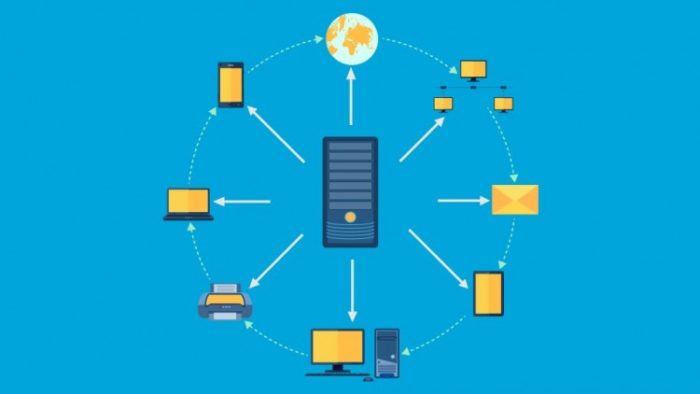What is Data Warehousing? The term data warehouse or data warehousing was first coined by Bill Inmon in the year 1990 which was defined as a “warehouse which is subject-oriented, integrated, time variant and non-volatile collection of data in support of management’s decision making process”. When referring to data warehousing as subject oriented, it simply means that the process is giving information about a particular subject rather than the details regarding the on-going operations of the company. Moreover, when data warehousing was referred to as integrated it means that the data or information which are gathered from a number of sources are then all gathered to synthesize a coherent whole. On the other hand, data warehousing being time variant simply means that the data available were identified on a particular period. Lastly, data warehousing as being non-volatile means that the data is stable and when a new data is added Continue reading
Information Technology
Why Information Security is Needed?
Information Security is very important from day to day life to protect your Information online. Leaning how to protect yourself online can benefit you in many ways by keeping your identity form being stolen or your bank account being compromised. Everyday people are led into scams to take information to use it for their own cause. Also learning Information Security is easy to get into. There are many websites and articles to read on to learn about attacks and what to do in a situation. Also learning about privy on social media can help with noticing scams that hackers use on victims. So, it’s best for someone to take the time and learn about the importance of information security. At the current technology era, information is a critical asset and should thus be protected at all costs. Information security refers to preventing unauthorized access to data in a manner that Continue reading
Barriers To Information And Knowledge Sharing
Information and knowledge sharing has become increasingly relevant in an organization since the transfer from an industrial economy based on a hierarchical control to a global, information-driven financial system and decentralized. Information and knowledge management from human is new and very tangible as well as technological side. The problems associated with sharing information and knowledge is to be briefly informed as one of the basic activities of information and knowledge management. Changes both in community culture and in deployed technological solutions and work procedures are required by the knowledge management. This serves as an essential of interaction between technological and social subsystems which demonstrates the information that searching, storing, manipulation and sharing of enormous volume of information are enabled by IT. Moreover, the conversion of data into information with minimum time and space constraints are enabled. The crucial consequence is the fact that in information and knowledge sharing IT plays Continue reading
Operating System – Meaning, Types and Functions
Operating system is the program, which usually installed into the computer by a boot program. It manages all other programs in computer. Sometimes it also called as “OS”. These programs also called applications. The application uses the operating system by making requests for services through API (Application Program Interface). Sometimes users can directly use the operating system through GUI (Graphical Users Interface) or command language. Operating system is a program that allows you to work with hardware and software on your computer. Basically, there are two ways to use operating system on your computer. The two ways are as follows: 1. for ex., DOS, you type a text commands and computer give respond to you according to your command. This is called command line operating system. 2. With a GUI (Graphical User Interface) operating system (ex., windows). You relate with the computer through graphical user interface with pictures and buttons Continue reading
E-Learning at the Workplace
Globally, the e-learning market has been growing rapidly, and e-learning is beginning to emerge as the new model of training and education across a wide range of different sectors and industries. This growth has resulted in part from extensive changes in the working environment, and from a shift from a product-based economy to a knowledge-based one, meaning that there is a more pressing need to train and educate workforces in new technologies and services. In addition, technological advancement and challenges in technology-oriented working life have paved the way for new forms of electronic learning. Consequently, e-learning now accounts for a significant proportion of corporate investment in workforce training. E-learning is a learning experience that is delivered by electronic technologies including for example, the use of the internet, intranets, interactive TV, virtual classrooms and so forth. For some scholars, e-learning is considered only as a mechanism for delivering training and education Continue reading
Internet of Things (IoT) Connectivity Landscape and Security Challenges
IoT refers to the Internet of Things. The Internet is connected to any device (including cell phones, cars, home equipment, and other wearable devices integrated with the sensor system) so that they can exchange information with each other over a network. The concept of the Internet of Things (IoT) as a network goes back to the 1980s, from where it took momentum later on to become the future of the internet. Over a couple of decades, we have seen diversified technologies in communications emerging and reflecting upon different applications and their requirements as they satisfy the needs of both personal and commercial use. Internet of Things (IoT) Connectivity Landscape The Internet of Things (IoT) landscape now involves an intense variety of accessible connectivity alternatives that need to be harmonized first across various sectors and then correctly coupled to fulfill the IoT Technical Key Performance Indicators. Internet of Things technology is Continue reading



